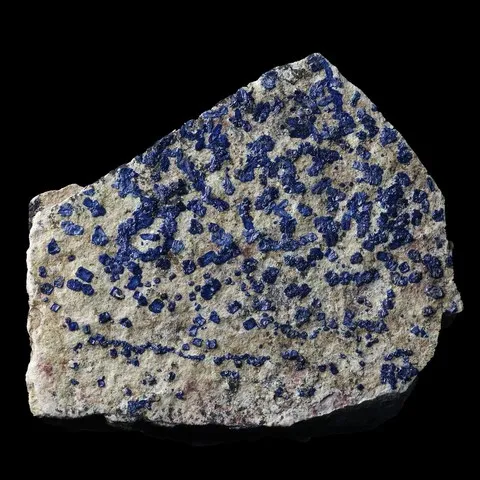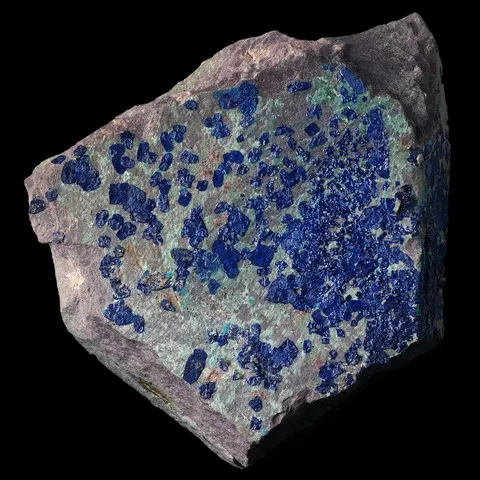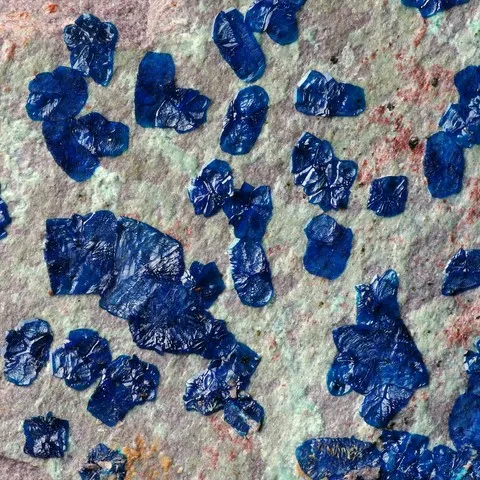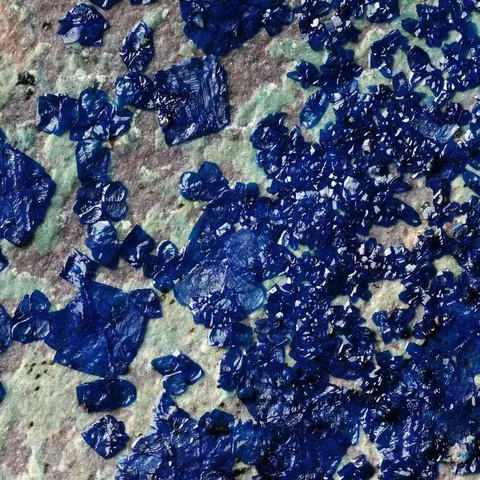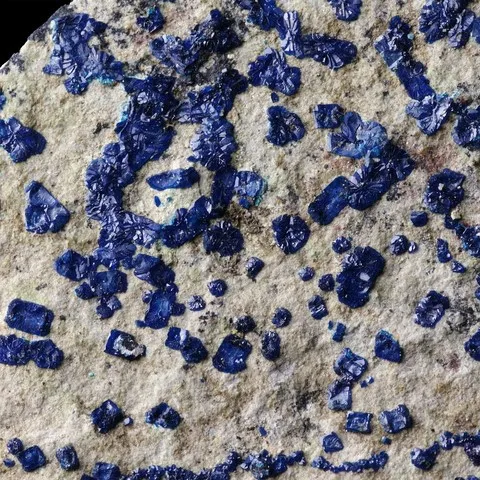CORNETITE
Class : Phosphates, arsenates, vanadates
Subclass : Anhydrous phosphates
Crystal system : Orthorhombic
Chemistry : Cu3PO4(OH)3
Rarity : Rare
Cornetite is a rare secondary phosphate from the oxidation zones of copper deposits. Its genesis seems to be favored by an arid climate, as for many copper sulphates. It owes its name to the Belgian geologist Jules Cornet. Its crystals are small short prisms with rounded edges, not reaching a centimeter, of a beautiful deep blue color, frequently gathered in rosettes or encrustations. Cornetite is associated with other secondary copper minerals (malachite, chrysocolla, brochantite, etc...), and sometimes manganese. Its rarity is partly due to the fact that it is easily transformed into libethenite by loss of ions (OH). It is a mineral intended only for the collection.
Cornetite in the World
Cornetite in France
This mineral is not reported in French underground.
Twinning
A twin plane is known for the species but is very difficult to identify with the naked eye.
Fakes and treatments
No fake recorded for this mineral species, it can however be confused with other blue copper minerals such as azurite.
Hardness : 4.5
Density : 4.1
Fracture : -
Trace : Blue
TP : Transparent to translucent
RI : 1.765 to 1.820
Birefringence : 0.055
Optical character : Biaxial -
Pleochroism : Difficult to observe
Fluorescence : None
Solubility : Hydrochloric acid
Magnetism : None
Radioactivity : None

